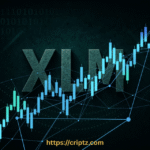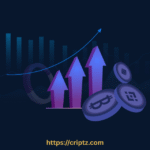Kazakhstan has taken a major step in cryptocurrency adoption with the launch of Central Asia’s first spot Bitcoin ETF by Fonte Capital. The financial firm announced that trading will officially begin on August 13, marking a milestone for the region’s digital asset investment landscape. The ETF will allow institutional and retail investors to gain direct exposure to Bitcoin’s price movements without the need to hold the cryptocurrency directly.
According to Fonte Capital, the ETF will be listed on the Astana International Exchange (AIX), operating under the Astana International Financial Centre (AIFC) regulatory framework. This ensures compliance with international investment standards while giving regional investors access to a regulated Bitcoin investment product. The ETF will track Bitcoin’s spot price through secure, insured custody arrangements, aiming to provide transparency and security for participants.
What the Listing Means for the Region?
The AIX debut situates Kazakhstan—already a major Bitcoin mining hub—as a gateway for Eurasian capital seeking regulated, exchange-traded Bitcoin exposure without private key management. Priced in USD, BETF lowers frictions for cross-border investors and aligns the AIFC’s ambitions to become a fintech bridge between Central Asia, the Middle East, and Europe.
A Strategic Move for Kazakhstan’s Financial Sector
Kazakhstan has emerged as a major player in the global crypto industry, particularly in Bitcoin mining, after China’s mining ban in 2021 drove miners to the country. The launch of a spot Bitcoin ETF aligns with the government’s vision to transform the AIFC into a leading fintech and blockchain hub for Eurasia. Analysts believe this product could attract significant foreign capital, as it offers exposure to Bitcoin through a secure, exchange-traded instrument in a rapidly growing market.
Global Context and Investor Interest
Spot Bitcoin ETFs have gained momentum worldwide in 2024 and 2025, with launches in the U.S., Hong Kong, and several European markets sparking a surge in institutional crypto investment. Kazakhstan’s entry into this space positions it competitively within the global financial ecosystem, especially for investors in Central Asia, Russia, and the Middle East seeking regulated crypto exposure.
Market Impact
Industry experts expect strong demand for the ETF given the increasing interest in Bitcoin as both a hedge against inflation and a speculative growth asset. The product could also help boost liquidity in Kazakhstan’s capital markets, signaling further integration between traditional finance and blockchain-based assets.
With trading set to begin on August 13, Fonte Capital’s spot Bitcoin ETF is likely to become a landmark offering in the region — bridging the gap between crypto markets and traditional investment channels.
Key Risks Investors Should Weigh
- Liquidity & spreads: Early-stage ETFs often see wider bid/ask spreads until market makers scale. Thin volumes can raise trading costs.
- Tracking & premiums/discounts: Although physically backed, ETFs can deviate from NAV during volatility or if creation/redemption processes face frictions.
- Regulatory evolution: Kazakhstan’s crypto policy is supportive but policy shifts or AIFC rule changes could affect operations or fees.
- Custody concentration: BitGo’s insured, institutional setup mitigates risk but doesn’t eliminate single-custodian concentration; insurance limits may not cover catastrophic scenarios beyond the cap. CoinDesk
- FX & market-hours frictions: USD quotation is helpful, but local investors with KZT bases face currency risk; AIX trading hours may not align with 24/7 BTC markets, potentially increasing gap risk at opens.
- BTC volatility: Core asset risk remains high; allocation sizing and rebalancing policies are essential.
What to Watch Next?
- AUM growth and daily volumes in the first 30–90 days (a leading indicator of institutional adoption).
- Authorized participants & creation/redemption mechanics disclosures (impact on spreads and tracking).
- Fee structure and any tax guidance from AIFC that could influence net returns.
- Potential follow-on products (ETH, basket crypto ETFs, covered-call strategies).
With years of proven expertise in the cryptocurrency space, Jake Gordon is a respected voice in blockchain, cryptography, and digital asset innovation. A dedicated student of cryptography, he combines academic knowledge with real-world insights, specializing in crypto presales, ICO analysis, and algorithmic advancements. Known for his deep market research, technical precision, and forward-looking perspectives, he helps readers navigate the fast-paced world of crypto with clarity, credibility, and passion.
Why Trust CRIPTZ?
At criptz.com, we bring you up-to-the-minute cryptocurrency news and expert analysis in 2025. Our seasoned team delivers accurate coverage of market trends, blockchain breakthroughs, and emerging innovations, backed by strict editorial standards. With 24/7 reporting on price movements, regulations, and tech advancements, we empower traders and investors to navigate the fast-paced crypto world with confidence. Count on Criptz.com for trustworthy insights into digital assets.







